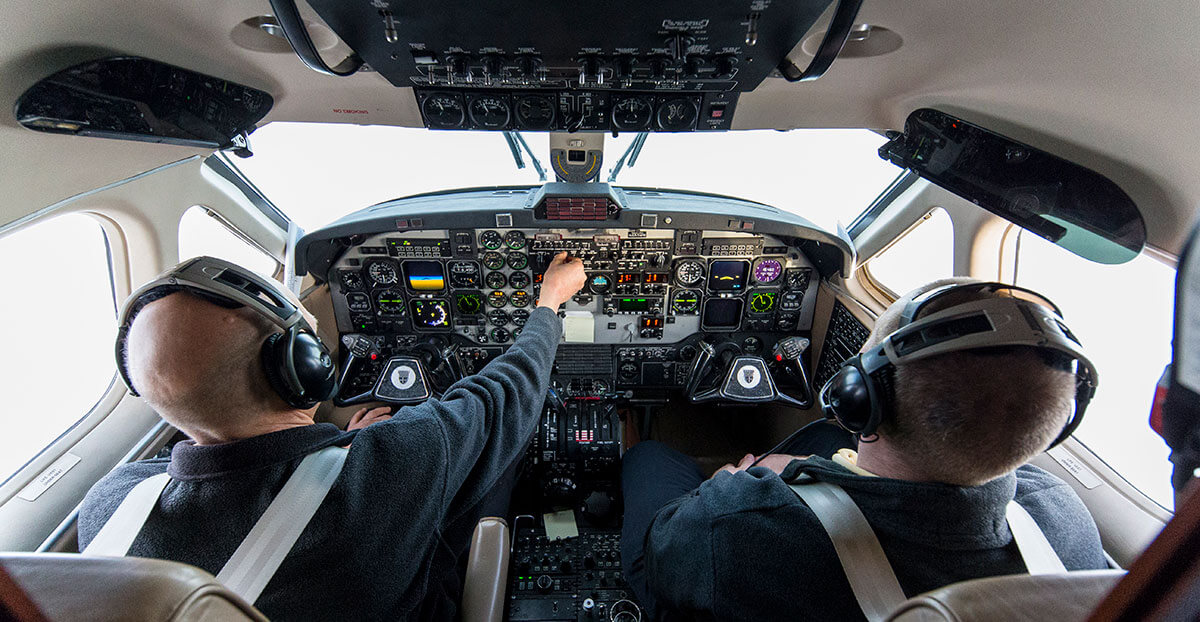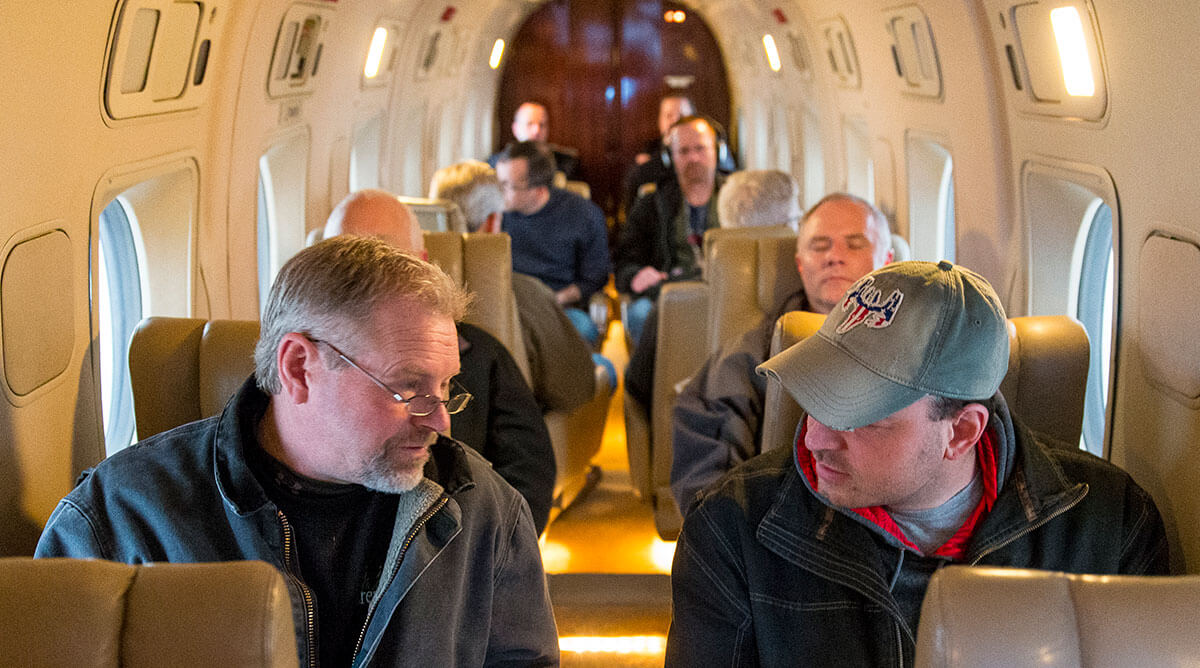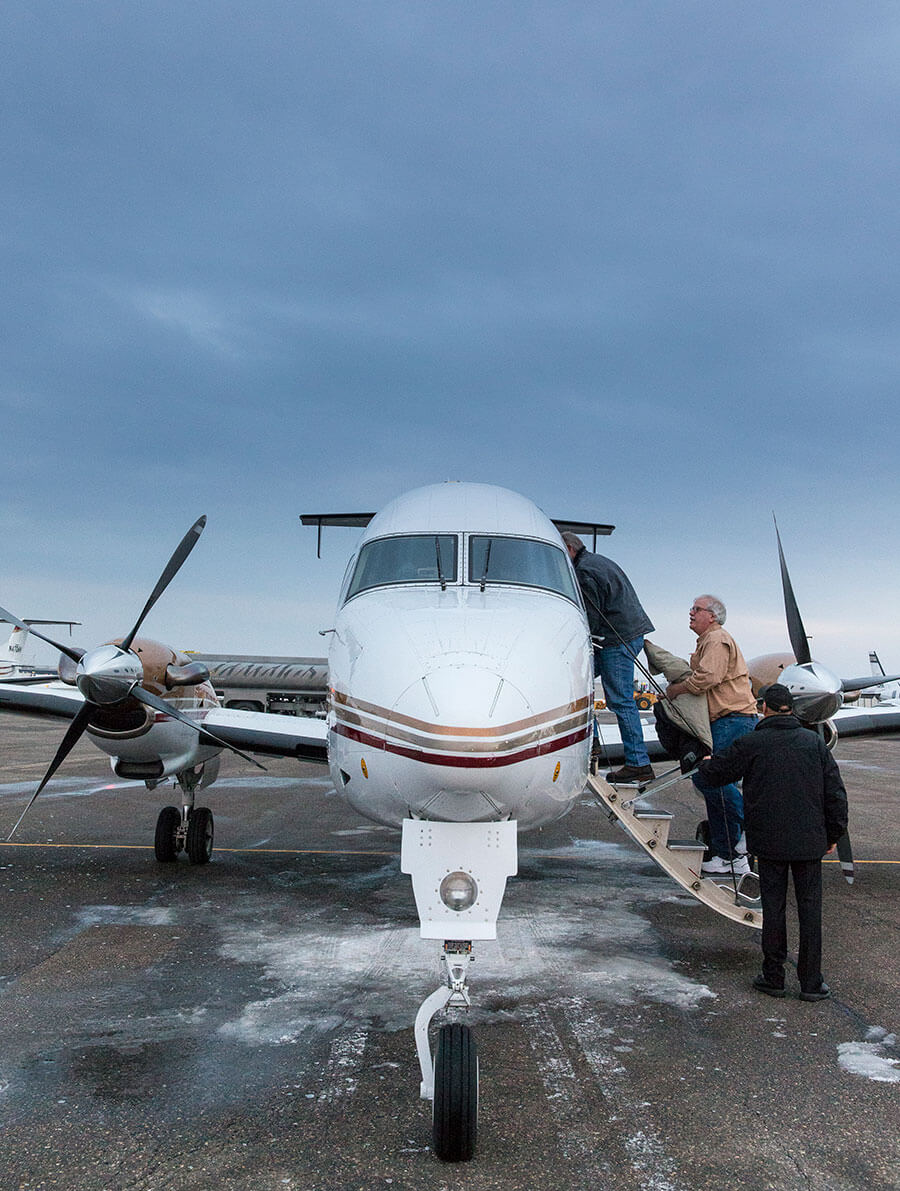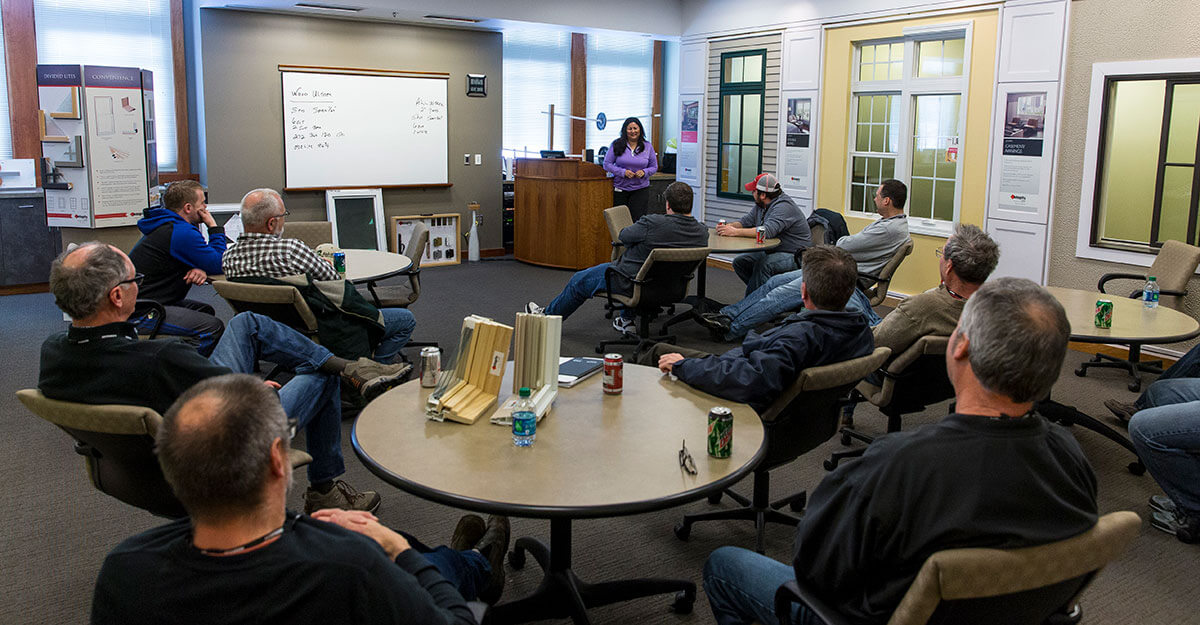
Business aircraft enable this family-owned business to provide outstanding customer service and invest in the local community.
June 1, 2014

Despite the marvels of multimedia presentations, no video or virtual tour can completely convey a company’s capabilities and corporate culture. That’s why the Marvin companies – a fourth generation, family-owned business – uses its four airplanes to bring customers to its headquarters in Warroad, MN (pop. 1,700), located just six miles from the Canadian border, to learn about the company and its made-to-order windows and doors, as well as to transport employees to multiple locations across the country.
“We host in excess of 4,000 dealers, architects, builders, remodelers, etc. [each year] at our training facilities,” said Jake Marvin, chairman and CEO. “In addition, we fly thousands of additional passenger legs annually for our own employees. We could not operate an international business from this location without our well-maintained aircraft and highly experienced pilots.”
We could not operate an international business from this location without our well maintained aircraft and highly experienced pilots.
Darrin Peterson, Marvin’s director of pre-post sales and services, explained why it is crucial to fly customers into Warroad. “Being a premium brand, it’s important that customers see the craftsmanship and quality that goes into our custom products. Getting customers to Warroad is key to our business, and the airplanes are one of our best sales tools to convert new customers or support existing customers and help them learn about our company, culture, community and family.”
“You can read about Marvin, but you can’t understand our company until you are here and have experienced it,” added Paul Marvin, vice president of sales, who believes that the company airplanes facilitate the building and nurturing of business relationships. “Product is important, the way you service it is important, but the relationship is the bedrock of it all, and that only happens in person.”

A Typical Customer Visit
Usually, customers fly into Minneapolis via airline and then are airlifted to Warroad aboard one of Marvin’s two Beech 1900s, its King Air B200 or its Citation XLS. Once they arrive at Marvin’s 30,000-square-foot training and visitor center, guests learn through interactive exhibits about the company’s history of quality and innovation. Then they spend the rest of the day touring the factory and attending product information sessions conducted in the center’s state-of-the-art classrooms.
Customers spend an evening with a designated Marvin host, and the following morning is devoted to learning more about the company and its products before the guests depart at noon. Throughout the visits, Marvin officials encourage visitors to interact with employees – not just in the offices, but on the factory floor and during meals – so they can experience the passion that Marvin people have for their jobs, their company and their community.
Except for peak business months, Marvin welcomes between 100 and 150 guests a week, usually in groups of 10 to 12 people. Virtually all of the visitors leave Warroad as true believers, say company officials, and Marvin’s larger dealers bring back their customers – architects, builders and contractors – six to 10 times a year to see new products and nurture relationships.
Elliott Larson, Marvin’s retired CFO, quipped, “If customers had to drive seven to nine hours one way [from Minneapolis], that would take a little enthusiasm out of the tour. That’s why our aircraft are so important to us in the selling of our product.”
Focusing on Customer Service

Marvin’s flight department conducts about 50 flights a week, 60 percent of which are dedicated to customer transport, which the company has been doing ever since it acquired its first airplane in 1976. The sales department arranges these trips, offering guests the option of being picked up in Minneapolis or at another airport closer to their home base. William S. (Bill) Marvin, son of company founder George Marvin, conceived the concept of flying customers into Warroad in order to make it easier on dealers who had been driving hundreds of miles to the company’s headquarters to see Marvin products.
Elliott Larson recalls offering a suggestion on how to improve the service. “I mentioned to Bill how we could be more efficient if we ran our aircraft on a schedule. He replied: ‘We don’t run our aircraft around the company schedule, we run them around the customer’s schedule.'”
Obviously, the flight department’s approach to flying is consistent with Marvin’s “Built Around You®” philosophy toward customers. In fact, Aviation Department Manager Jeff Parker emphasizes to his people how important personal touch” is when dealing with guests because Marvin aviation personnel are the first and last company people customers see on their trips to Warroad.
But customer flying isn’t the only thing the flight department does. Marvin and its affiliated companies employ more than 4,300 people, some of whom need to travel to company facilities located in North Dakota, Oregon, Tennessee and Virginia. There’s also the occasional trip to Canada.

Fostering a Sense of Community
Marvin’s corporate culture stresses collaboration with partners and values the concept of community, which is reflected in the many philanthropic efforts of the company and the Marvin family. Brenda Baumann, Marvin’s communications manager, cites a company scholarship fund for college-bound students and the town’s world-class senior living center, sports arenas and public library as examples of this benevolence.
“The company and community are so intertwined, creating a larger family environment. Warroad is something special,” she said.
Paul Marvin says the company’s commitment to and investment in community is yet another reason why business aviation is so important to Marvin and Warroad. “There were opportunities for us to go somewhere else, but there was a higher purpose for us – a commitment to community. That’s why we continue to be here today. That’s why we are happy to invest in ways to continue to make Warroad the hub of the company, and aircraft are part of that.”
Marvin's Tips for Operating to Higher Standards
Safety First — For safety purposes, Marvin always flies with two pilots, said Aviation Department Manager Jeff Parker, a 30-year Air Force veteran. His military background has made him an advocate of cross training, and each of Marvin’s nine pilots flies two aircraft types. Parker says his aviators have experience in a variety of operations – corporate, commuter and even bush flying – and several company pilots have logged more than 20,000 hours and have helped teach the younger pilots the company culture.
Emphasis on Excellence — Although Marvin is a Part 91 operator, the company adheres to Part 135 standards in many aspects of its operation. Also, Marvin has a designated safety officer and uses a flight risk assessment tool to evaluate each planned mission, with a special emphasis on avoiding pilot fatigue. As with any good flight department, there is no management pressure to make flights under marginal conditions.
Seasonal Scheduling — Because of the seasonal nature of construction, Marvin’s flight department is busiest between October and May, so aviation personnel usually take vacations and undergo annual recurrent training during the summer.
Maintenance Priorities — Marvin performs all maintenance on its turboprops in house. Three technicians, all of whom have A&P licenses, stay busy performing 200-hour inspections on these airplanes, each logging up to 600 hours per year. (The jet flies about 200 hours annually.) Besides scheduling to avoid fatigue, the technicians are mindful about managing inspections so as to avoid having two airplanes down at the same time. Perhaps most important, their mantra is: “We don’t want to get it done fast, we want to get it done right.”

SNAPSHOT: THE MARVIN COMPANIES
4 Aircraft:
Beech 1900C, Beech 1900D, King Air B200 and Cessna Citation XLS, all based at Minnesota’s Warroad International Memorial Airport (RRT).
13 Flight Department Personnel:
Aviation manager, nine pilots (including chief pilot) and three maintenance technicians (including chief of maintenance).
Flight scheduling is done by Tours and Training Department personnel.


 International Business Aviation Council Ltd.
International Business Aviation Council Ltd.